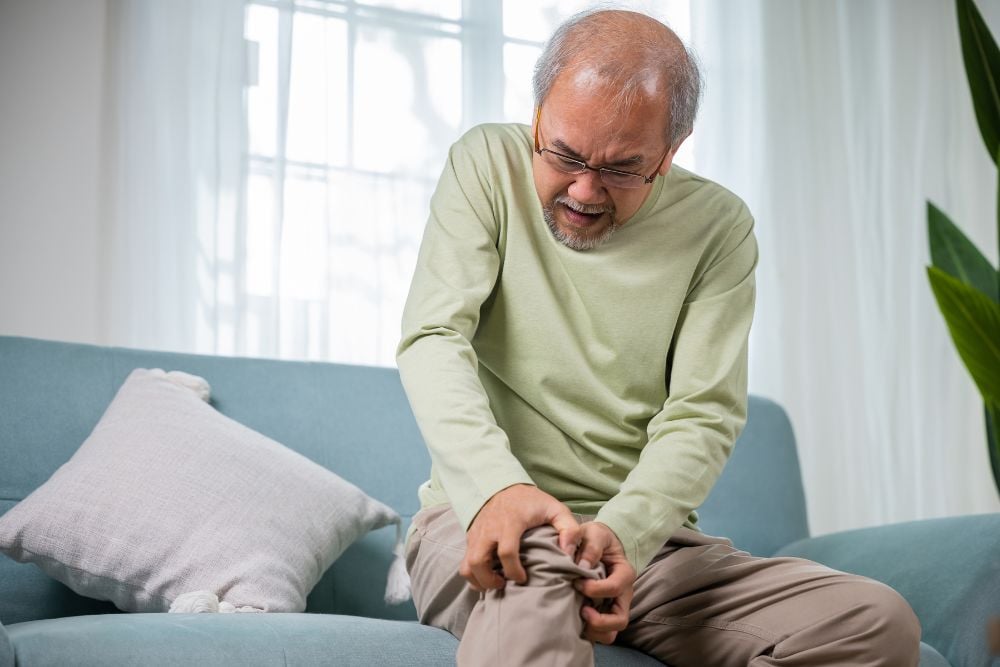Understanding Arthritis: How It Affects the Knee and Shoulder Joints
June 30th, 2023Orthopedic CareOrthoHC
Arthritis can affect anyone, no matter your age, race, gender, or health status. The most common symptoms are stiffness and joint pain, likely to worsen with age. While the entire body can be impacted, your knees and shoulder joints are particularly susceptible. By knowing how arthritis affects your body, you can alert your doctor of any warning signs. They can diagnose you and begin treatment sooner, helping relieve pain and discomfort.
An Understanding of Arthritis
The United States’ leading cause of disability, arthritis is a group of more than 100 different conditions causing joint pain, stiffness, and swelling. Arthritis is incurable and is typically chronic (ongoing), and it’s more common in women. You’re more likely to develop one of these two forms:
Osteoarthritis
The most common type, osteoarthritis affects almost any joint, but usually the knees, hands, hips, and joints in the spine. Healthcare experts have determined that osteoarthritis involves the whole joint. Essentially, with this process, the affected joints’ bones weaken; the connective tissue, including the cartilage cushioning the bones, deteriorates; and inflammation damages the joint lining.
Rheumatoid Arthritis
An autoimmune condition, rheumatoid arthritis is an inflammatory disease of the joint linings. It causes painful swelling, and gradually leads to bone erosion and joint deformity. This condition affects smaller joints first; as it progresses, symptoms may affect the knees, shoulders, wrists, ankles, elbows, and hips. Typically, the same joints on both sides of your body are affected.
How Arthritis Affects the Knees
Since the knees are the body’s largest and strongest joint, knee arthritis can make movement difficult. You may experience such symptoms as:
- Painful and inflamed joints.
- Stiff and swollen joints that make it hard to bend and straighten the knee.
- Pain and swelling, often worse in the morning, after sitting or resting, or with vigorous activity. It can cause knee weakness or buckling.
- Locking or sticking of the knee during movement, causing creaking, clicking, or grinding noises (crepitus).
The knee has three major parts: the lower end of the femur (thigh bone), the upper end of the tibia (shinbone), and the patella (kneecap). They form a joint that is covered with articular cartilage, a smooth, slippery substance that cushions and protects the bones as your knee bends and straightens. The menisci, two cartilage pieces, serve as shock absorbers between your femur (thigh bone) and shinbone. Additionally, the synovial membrane releases a fluid that lubricates the cartilage and reduces friction.
Osteoarthritis causes the knee joint cartilage to wear away gradually, becoming frayed and rough, as the protective space between bones shrinks. The bones then rub against each other, causing painful bone spur formation. Symptoms develop slowly, with pain worsening over time. Rheumatoid arthritis affects the synovial membrane, causing the joint to swell and leading to pain and stiffness.
How Arthritis Affects the Shoulders
Should arthritis affect your shoulders, the inflammation causes pain and stiffness, making it difficult to lift your arms and perform routine activities. Your shoulder has three bones: the upper arm bone (humerus), the collarbone (clavicle), and the shoulder blade (scapula). The humerus’ head fits into a shallow socket (glenoid) in the scapula. Arthritis typically targets the shoulder’s two joints:
- The acromioclavicular (AC) joint, where the clavicle meets the tip of the shoulder blade (acromion).
- The glenohumeral joint, where the head of the humerus fits into the scapula.
The most common symptom is pain aggravated by activity and worsening over time. You may also have a limited range of motion, while crepitus can occur with shoulder movements. This osteoarthritis type usually affects people over 50. It’s more likely to target the AC joint than the glenohumeral shoulder joint. For rheumatoid arthritis, both shoulder joints may be affected.
Familiarize Yourself With Knee and Shoulder Arthritis
Your knees and shoulders are at risk for arthritis, which can take a toll on your health and quality of life. It’s vital to understand this condition. By recognizing any symptoms, you can alert your doctor and quickly initiate treatment. They may refer you to a specialist, such as an orthopedic specialist, to prevent further damage. If you’re experiencing knee or shoulder arthritis symptoms, we invite you to schedule an appointment at The Orthopedic Health Center today.
Appointments available now.
